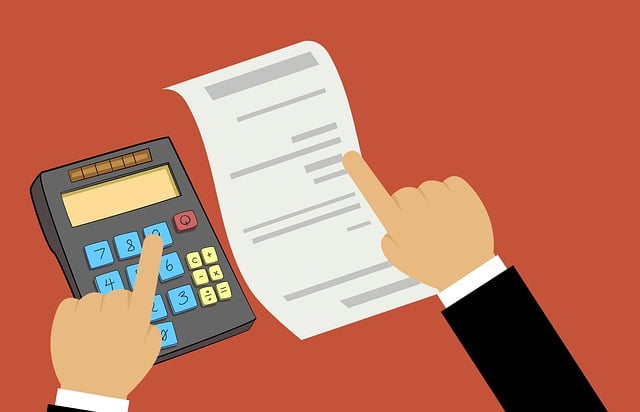Let’s be honest; most of us hear the word “budget” and quickly picture boring spreadsheets, math uneasiness, and giving up each small delight in life. But here’s the great news: Budgeting doesn’t have to feel like budgetary discipline. In reality, making a budget that works is almost giving yourself flexibility, not restrictions.
Let’s break it all down step by step, in plain dialect, and in a way that makes sense for genuine life. Here’s How to Create a Budget.
Why Most Budgets Come up Short (And How Yours Won’t)
Budgets that are too strict crash fast
If your budget feels like a slim down with nothing but plain lettuce, you’re not going to adhere to it. Cutting out each treat, pastime, or unconstrained buy? That’s a formula for burnout.
No adaptability = Frustration
Life is eccentric. Your budget ought to have some room for startling costs, whether it’s a shock restorative charge or your best friend’s last-minute wedding invitation.
Step 1: Know Your ‘Why’

Before you touch a calculator, ask yourself: Why do I need to budget?
Is it to get out of obligation? Spare for a getaway? At long last feel like you’re not suffocating in bills?
When you know your reason, it’s way less demanding to remain on track when enticement strikes.
Step 2: Track Each Penny (Yes, Each One)
You can’t oversee what you don’t degree. Spend one month following each single rupee, dollar, or euro you spend. Utilize apps like Mint, YNAB, or, indeed, a scratch pad. You’ll be stunned by how much those “little things” add up.
Step 3: Calculate Your Genuine Month-to-Month Income
We’re not talking around what your contract says—you require your take-home pay after charges, benefits, and other deductions. If your wage shifts (consultants, we see you), take an average of the final 3–6 months.
Step 4: Categorize Your Spending

Break your costs into clear categories:
Essentials: Lease, utilities, goods, transportation
Financial Objectives: Obligation installments, investment funds, crisis fund
Lifestyle: Feasting out, Netflix, leisure activities, exercise center, etc.
Irregulars: Birthdays, yearly memberships, car repairs
This makes a difference. You see where your cash ought to be going versus where it actually goes.
Step 5: Utilize the 50/30/20 Run the show as a Beginning Point

This well-known budgeting strategy keeps things simple:
50% Needs: Lodging, bills, groceries
30% Needs: Fun stuff, excitement, eating out
20% Objectives: Reserve funds, speculations, obligation payoff
Not ideal for everybody, but it’s an extraordinary way to begin adjusting your money.
Step 6: Construct in Fun Cash (Yes, Seriously)
If you don’t incorporate a few guilt-free investments in your budget, you’ll inevitably revolt. Call it a “fun fund” or “sanity savings”—just make sure it’s there.
Step 7: Mechanize What You Can
Automating your reserve funds, bills, and obligation installments is the apathetic virtuoso move that in the future you will thank you for. Set it and disregard it—less push, fewer late expenses, and unfaltering progress.
Step 8: Alter and Survey Monthly
Budgets are living records. Don’t treat yours like it’s set in stone. Survey it month to month, alter as required, and be fair around what’s working and what isn’t.
Step 9: Arrange for Sporadic Expenses
You know those costs that sneak up on you each year? Like car protections, back-to-school shopping, or occasion gifts?
Divide the annual taken a toll by 12 and spare for them monthly—so you’re not freezing when they pop up.
Step 10: Construct a Crisis Fund
Life tosses curveballs. A crisis finance (point for at least 3 months of costs) can keep you from falling back into obligation when something unforeseen happens.
Step 11: Utilize Cash Envelopes for Issue Areas
If you overspend in certain categories (like eating out or shopping), attempt the envelope strategy. Pull back that category’s cash in cash, and once it’s gone, it’s gone. No cheating!
Step 12: Keep Your Budget Visible
Out of locate = out of intellect. Keep your budget where you’ll see it often—on your cooler, phone, or organizer. The more obvious it is, the more likely you’ll adhere to it.
Step 13: Celebrate Little Wins
Paid off a credit card? Save your to begin with $500? That’s colossal! Celebrate your progress—just don’t blow the entirety of your budget doing it.
Step 14: Include Your Accomplice or Family
Money talks can be cumbersome, but straightforwardness is key. Budgeting as a group builds belief and keeps everybody on the same page.
Step 15: Don’t Compare Your Budget to Anybody Else’s
Social media is a highlight reel. Don’t feel awful if your budget doesn’t look like somebody else’s. Your priorities, your income, and your life choices all hinge on one crucial factor: your budget.
Conclusion: Budgeting Isn’t Almost Limitation, It’s Around Freedom
Creating a budget that works isn’t cruel; giving up everything fun in life. It implies putting you in control of your cash, not the other way around. It’s almost setting objectives and observing yourself crush them. It’s about freedom—to spare, to spend admirably, to live life on your terms.
You are not required to be a cult member. You fair require to begin. And once you do, you’ll be flabbergasted at how much peace, certainty, and control budgeting can allow you.
FAQs
How do I adhere to a budget when I have unpredictable income?
Track your normal month-to-month pay, base your budget on the most reduced salary month, and prioritize fundamentals and reserve funds amid higher-income months.
What’s the best app for budgeting?
Popular choices incorporate Mint (free), YNAB (paid but capable), and Goodbudget (incredible for cash envelope clients). Select the one that fits your style.
How much ought to I spare each month?
.
Begin little if needed—even 5–10% is superior to nothing and includes up fast.
Can I budget if I’m in debt?
Absolutely! In reality, budgeting is key to getting out of obligation. Prioritize obligation installments in your budgetary objectives category.
How do I handle budget burnout?
Take breaks, revive your objectives, and don’t be as strict. Remember—your budget ought to serve you, not the other way around.



